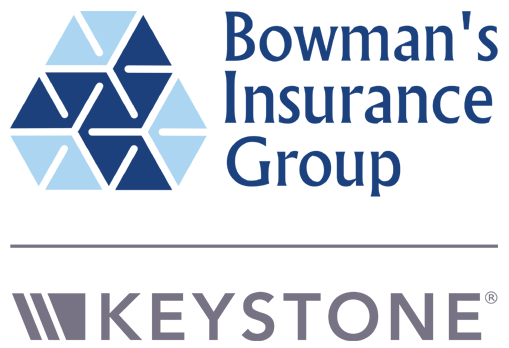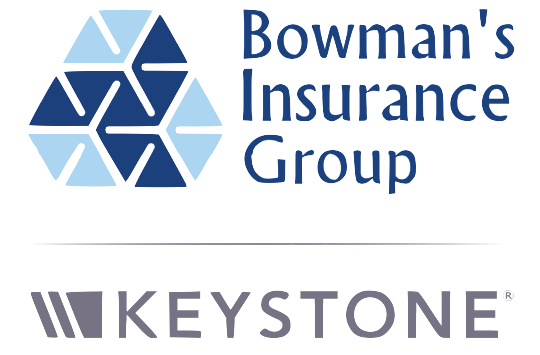Pennsylvania Snowplow & Snow Removal Insurance

See How We're Different:
Call Us: 717-838-5464
Top 3 Recommended Policies
Index
Understanding Snowplow & Snow Removal Insurance
Types of Coverage for Snowplow & Snow Removal Services
Cost Factors for Snowplow & Snow Removal Insurance
How to Choose the Right Insurance Provider
Claim Process for Snowplow & Snow Removal Insurance
Frequently Asked Questions about Snowplow & Snow Removal Insurance
Contact Us
This guide aims to provide a comprehensive understanding of snowplow and snow removal insurance specifically tailored for businesses operating in Pennsylvania. Given the state's unique weather conditions and regulations, it's vital for snow removal service providers to ensure they have adequate coverage. Below, we explore essential aspects of snowplow insurance, its importance, coverage types, factors affecting costs, how to choose the right provider, the claim process, and frequently asked questions.
Understanding Snowplow & Snow Removal Insurance
Snowplow and snow removal insurance is designed to protect businesses that engage in snow clearing services. It covers various risks associated with operating snow removal equipment and providing services to clients during the winter months. Without appropriate coverage, a business faces significant financial exposure in the event of an accident or damage.
Importance of Snowplow Insurance in Pennsylvania
Pennsylvania experiences heavy snowfall in winter, making snow removal a vital service for both residential and commercial properties. Due to this high demand, snow removal businesses must consider the potential risks they face every season.
Snowplow insurance not only safeguards against financial liabilities but also enhances a company’s credibility. Clients are more likely to hire insured providers, understanding that they are covered in case of any accidents or damages incurred during service. Furthermore, having insurance can help businesses secure contracts with larger clients, such as municipalities or property management companies, who often require proof of insurance before awarding contracts. This requirement underscores the importance of being adequately insured in a competitive market.
Key Features of Snow Removal Insurance
When looking for snow removal insurance, it is important to identify the key features that are beneficial to your business. These features typically include liability coverage, equipment coverage, and workers' compensation. Each of these features plays a crucial role in helping operators mitigate risks associated with snow removal operations.
Comprehensive snow removal insurance coverage provides peace of mind, knowing that your operations, employees, and clients are protected against unforeseen events. Additionally, some policies may offer coverage for business interruptions, which can be particularly useful during severe weather events that may prevent operations for extended periods. This type of coverage ensures that businesses can maintain financial stability even when they are unable to operate due to extreme conditions. Moreover, many insurers provide tailored policies that can be adjusted to fit the specific needs of a snow removal business, allowing owners to choose coverage limits and deductibles that align with their operational risks and budget.
Types of Coverage for Snowplow & Snow Removal Services
Understanding the different types of coverage available is crucial for snow removal businesses. Below are some essential types of coverage that should be part of a snowplow service insurance policy.
Liability Coverage
Liability coverage is critical for any snow removal business as it protects against third-party claims for bodily injury and property damage. If a snowplow operator accidentally causes damage to a parked car while clearing a driveway, liability coverage helps cover the costs associated with repairing that damage.
This type of insurance ensures that businesses are protected against lawsuits and hefty settlement costs that could arise from accidents during their operations. Furthermore, it can also cover legal fees, which can accumulate quickly in the event of a dispute, providing an additional layer of financial security for the business owner.
Property Damage Coverage
Property damage coverage is specifically designed to address damage caused to a client's property due to snow removal activities. For example, if a snowplow inadvertently damages a tree or landscaping while clearing snow, this coverage would help manage the financial repercussions.
Having property damage coverage not only protects the business from potential losses but also helps in maintaining strong client relationships, as it shows a commitment to responsibility and accountability. Additionally, this coverage can also extend to equipment and tools used in the snow removal process, ensuring that the business can quickly recover from unforeseen incidents without significant financial strain.
Workers Compensation Coverage
Workers' compensation coverage is essential for any business with employees. It provides benefits to employees who may get injured while performing their job duties, such as operating snow removal equipment.
In Pennsylvania, this insurance is legally required for employers and helps cover medical expenses and lost wages for employees who are hurt on the job. By investing in workers' compensation, businesses prioritize their employee's safety while also adhering to the law. Moreover, having this coverage can enhance employee morale, as workers feel more secure knowing that their well-being is a priority for their employer, which can lead to increased productivity and lower turnover rates.
Cost Factors for Snowplow & Snow Removal Insurance
The cost of snowplow and snow removal insurance can vary significantly based on multiple factors. Understanding these factors can help business owners prepare for the expenses involved in securing adequate coverage.
Equipment Value
The value of equipment used in snow removal operations is a key factor in determining insurance costs. If a business owns expensive snow plows, de-icing machines, and other specialized equipment, the insurance premiums may be higher compared to businesses with less valuable equipment.
In many cases, insuring higher-value equipment offers greater protection, making it essential for owners to conduct regular evaluations of their assets. Additionally, businesses might consider investing in preventive maintenance and upgrades to their equipment, as newer models often come with enhanced safety features that can potentially lower insurance costs. Insurers may also provide discounts for businesses that demonstrate a commitment to maintaining their equipment in optimal condition, thereby reducing the likelihood of accidents and claims.
Business Size and Scope
The size and scope of a snow removal business influence insurance costs as well. Larger businesses with more clients, a bigger workforce, and larger operational areas may face higher premiums due to the increased risks associated with their operations.
Conversely, smaller businesses often enjoy lower premiums, although they must still ensure they have adequate coverage to protect their interests. Furthermore, the type of contracts a business engages in can impact costs; for instance, long-term contracts with municipalities or large commercial properties may necessitate higher coverage limits, which can drive up insurance costs. Business owners should carefully assess their operational scale and the nature of their contracts to ensure they are adequately covered without overextending their budget.
Location and Weather Conditions
Location plays a significant role in determining insurance costs for snow removal businesses. Areas that experience severe winter weather, such as heavy snowfall or ice storms, may result in higher premiums as the risk of accidents and property damage increases.
Insurers assess regional risks when calculating premiums, so understanding local weather patterns is vital for business owners seeking snow removal insurance. Additionally, urban areas may present unique challenges, such as increased traffic and higher population density, which can lead to a greater likelihood of accidents. On the other hand, businesses operating in rural areas might face different risks, such as difficulty accessing job sites during severe weather. By understanding these nuances, business owners can better tailor their insurance policies to fit their specific operational environments and potentially negotiate more favorable rates with their insurers.
How to Choose the Right Insurance Provider
Choosing the right insurance provider can be a daunting task, but certain factors can guide you toward making an informed decision. Here are essential considerations when reviewing potential insurance providers.
Evaluating Insurance Provider's Reputation
Researching the reputation of an insurance provider is essential. Reading reviews, checking customer testimonials, and exploring online forums can provide insight into the quality of service an insurer offers. Reputable providers are likely to have a strong track record in claims processing and customer support.
Consulting with fellow snow removal business owners can also yield valuable recommendations for reliable insurance providers. Additionally, consider looking at industry ratings from organizations like A.M. Best or J.D. Power, which assess financial stability and customer satisfaction. These ratings can give you a clearer picture of how well an insurance provider is likely to perform in times of need, ensuring that you choose a company that can handle claims efficiently and effectively.
Understanding the Policy Terms and Conditions
Before committing to any policy, it is crucial to understand terms and conditions thoroughly. This includes knowing what is covered, limits of coverage, deductibles, and any exclusions that may apply. A clear understanding of the policy will help avoid unpleasant surprises when filing a claim.
Don't hesitate to ask questions or seek clarification from insurance agents regarding any policies that seem unclear. It’s also beneficial to review the policy language carefully, as some terms may have specific meanings that differ from everyday usage. Consider requesting a sample policy to review at your leisure, allowing you to identify any potential gaps in coverage that may not be immediately apparent during initial discussions.
Comparing Quotes from Different Providers
Once you have a list of potential insurance providers, it is wise to compare quotes from different companies. This allows business owners to evaluate which policies provide the best coverage relative to the premium costs.
Use this opportunity to assess not just the price, but the value each policy offers, keeping in mind your specific operational needs and risks. Consider factors such as the insurer's claims process, customer service accessibility, and any additional services they may provide, such as risk management resources or legal support. These elements can significantly impact the overall experience and satisfaction with your insurance provider, making it essential to look beyond just the numbers when making your decision.
Claim Process for Snowplow & Snow Removal Insurance
Understanding the claim process is a vital aspect of managing insurance policies. Knowing when and how to file a claim will help ensure that you receive timely assistance when needed.
When to File a Claim
Filing a claim should be promptly considered following any incident that results in property damage, bodily injury, or loss of business assets. Proper documentation of the event that triggered the claim is essential.
Waiting too long to report an incident may complicate the claims process, so it’s crucial to adhere to the requirements outlined in your insurance policy. For example, if a snowplow accidentally damages a customer's property during a snow removal operation, it's important to notify your insurer immediately to avoid potential disputes over coverage later on. Additionally, being aware of your policy's specific time frames for reporting incidents can save you from unnecessary headaches.
Steps to Filing a Claim
The steps to filing a claim typically include the following:
- Notify your insurance provider about the incident as soon as possible.
- Document everything related to the incident, including photographs, witness accounts, and other pertinent information.
- Fill out the necessary claims forms accurately and submit them promptly.
- Follow up with the insurance provider to ensure your claim is being processed.
Following these steps will streamline the process and help avoid unnecessary delays in receiving assistance. It's also advisable to keep a record of all communications with your insurance company, including names, dates, and details of conversations. This can be particularly useful if any discrepancies arise during the claims process, as it provides a clear timeline of your interactions.
What to Expect After Filing a Claim
After filing a claim, expect your insurance provider to conduct an investigation into the incident. They may send an adjuster to assess the situation and determine the validity of the claim. Once this investigation is complete, the insurer will make a decision regarding coverage and compensation.
The timeline for claims processing can vary based on the complexity of the case, so maintaining open communication with your insurer is key to understanding the status of your claim. In some instances, the adjuster may require additional information or documentation, which can further extend the processing time. Being proactive in providing any requested materials can help expedite the resolution. Furthermore, if your claim is denied, your policy should outline the appeals process, allowing you to contest the decision and present your case for reconsideration.
Frequently Asked Questions about Snowplow & Snow Removal Insurance
As with any specialized insurance, many questions often arise regarding snowplow and snow removal insurance. Below are some frequently asked questions.
Is Snowplow Insurance Required in Pennsylvania?
While snowplow insurance may not be legally mandated in Pennsylvania, having it is strongly advised. Without adequate coverage, businesses face significant risks that could result in devastating financial losses. Insurance helps protect against those risks and is often a requirement for obtaining contracts with larger clients.
What Does Snow Removal Insurance Cover?
Snow removal insurance generally covers liability for bodily injury and property damage, property damage to clients’ locations, and workers' compensation for employees. Some policies may also include coverage for equipment and vehicle loss or damage.
Business owners should review the specifics of their policies to ensure they have adequate coverage for their particular operations. Additionally, it’s important to consider endorsements or additional riders that can enhance coverage, such as coverage for subcontractors or specialized equipment used in snow removal. This can provide an extra layer of protection, especially during harsh winter storms when the risk of accidents and damage is heightened.
How Much Does Snowplow Insurance Cost?
The cost of snowplow insurance varies widely based on coverage types, the value of equipment, the size of the business, and regional conditions. On average, small to medium-sized snow removal businesses may expect to pay anywhere from a few hundred to several thousand dollars annually for adequate insurance coverage.
Gathering quotes from multiple providers will help business owners find a policy that suits their budget while still providing essential protections. It's also beneficial to work with an insurance agent who specializes in commercial insurance for snow removal services, as they can provide insights into the nuances of the industry and help tailor a policy that meets specific needs. Furthermore, taking proactive steps to improve safety measures, such as training employees and maintaining equipment, can sometimes lead to discounts on premiums.
In summary, understanding snowplow and snow removal insurance is crucial for any business operating in Pennsylvania's winter landscape. Protecting your business with proper coverage not only safeguards against unforeseen accidents but also ensures that you can continue serving your clients with confidence through the snowy season. As winter approaches, it’s wise for snow removal businesses to not only focus on their operational strategies but also to revisit their insurance policies to ensure they are adequately protected against the unique challenges that winter weather brings.



